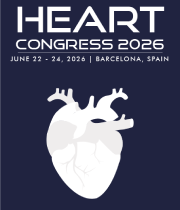Title : Utilizing conditional probability and bayes’ theorem for harmonizing multi-modality cardiac imaging results
Abstract:
The use of multiple noninvasive tests in a patient for a specific question in cardiology is becoming more common. While it is expected that each new piece of test information will align, the reality is that each test carries strengths and weaknesses that generate a profile of accuracy and associated false positive and false negative results. When two non-gold-standard tests produce non-concordant results, it can be difficult to chart a clinical course. Clinical guidelines for cardiac imaging rely heavily on conditional probability in the form of pre-test clinical risk assessment to maximize the incremental value of the test result. That risk classification is often the main determinant of appropriateness. Bayesian analysis of conditional probability allows the distillation of multiple pieces of information into a single probability of the presence or absence of disease. Probability becomes the common language linking the information. Three noninvasive tests that generate multiple data outcome points will be examined: coronary CT and CT fractional flow reserve, Exercise ECG and SPECT myocardial perfusion, and positron emission tomography with visual analysis and quantitation of absolute myocardial blood flow. Conditional probability will be used to incorporate all of the variables generated by each of these modalities that produce measurable results into a single probability of coronary artery disease. In this manner, all of the prior information on a single patient is accounted for in the final test interpretation.
Audience Takeaway
- Attendees will come to understand the principles of conditional probability
- Apply conditional probability principles to their clinical practice
- Understand how conditional probability can be used to provide synergism with heterogenous test results.
- Attendees should be able to better synthesize multiple pieces of clinical data for a single patient and establish a post-test probability of the disease in question in a methodical manner rather than guessing.



